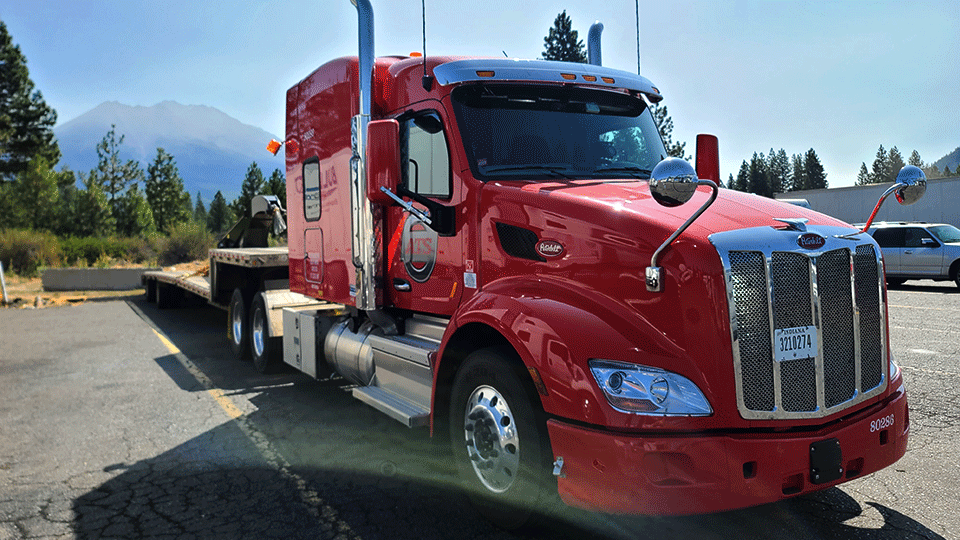 The vast majority of the loads moved by trucking companies aren’t classified as “high value.” Transporting these shipments — those that land below $100,000 in monetary value — is a relatively standard practice for trucking companies and shippers.
The vast majority of the loads moved by trucking companies aren’t classified as “high value.” Transporting these shipments — those that land below $100,000 in monetary value — is a relatively standard practice for trucking companies and shippers.
If you’re in the process of securing capacity for a load of higher value, however, you likely have questions coming at you in droves: “what is the value of this cargo?”; “do you have an approved securement plan?”; “is this freight new or used?”
These questions, though important for your transportation company to understand, can sometimes be confusing for shippers. Why does your provider need to know these things? Can’t they just pick up your cargo like normal?
With so much at stake for your business, it’s imperative that you and your partners are on the same page as to the exact requirements of your high-value freight.
Here at Anderson Trucking Service (ATS), we have a system in place to ensure our capabilities match the needs of each high-value load we’re presented.
And, while some of the questions we ask may not be broached by all transportation providers, most of them are — so it’s important that you understand your role here.
In this article, you’ll learn what carriers need to know about high-value loads before servicing them. Additionally, we’ve covered why this information is crucial so that you’re prepared to have these conversations as they arise.
What is Considered a High-Value Load?
Before we get to the heart of this discussion, it’s important that we define the term “high value.” Ambiguity won’t help you make the correct logistical decisions so let’s do away with it now.
High-value freight, for all intents and purposes, is any load that exceeds the legal cargo coverage minimums required of commercial motor carriers. Although there is no legal minimum cargo coverage, an industry practice of maintaining $100,000 is the norm in today's market.
That said, transportation providers typically group cargo valued in excess of $100,000 into four tiers. These tiers are:
- Cargo valued between $100,000-$250,000
- Cargo valued between $250,000-$500,000
- Cargo valued between $500,000-$1,000,000
- Cargo valued in excess of $1,000,000
As the total value of a shipment rises, things change for transportation providers — requiring them to plan accordingly and ask different questions to make sound decisions.
What Do Transportation Companies Need to Know About Your High-Value Freight?
It’s difficult to definitively state which questions your partner will ask you about your high-value cargo. Every transportation provider has different procedures for hauling these shipments — and criteria for which value tiers they feel comfortable covering.
That said, the best providers in the business may ask you any/all of the following queries when you request service for your high-value shipments:
- Is this cargo new or used?
- Is this cargo crated?
- What is your declared cargo value?
- Who owns this freight?
- How often do you ship this kind of freight?
- Do you have a securement plan?
- Is this cargo sensitive to water, temperature or dirt?
- What are the dimensions of this cargo?
- Do you have a recommended trailer type?
- What are your loading/offloading arrangements?
Each of these queries helps transportation companies make decisions for the handling of your shipment. Let's talk about how they do so and why every question is so important.
Is This Cargo New or Used?
Sometimes, when moving high-value freight — particularly when it is a singular product — a transportation provider may ask you whether it is new or used. This is for a good reason.
Firstly, the age of your cargo helps carriers determine next steps. For new products, transportation providers can operate under the assumption that they are in perfect, unblemished condition. In this instance, ensuring the load is properly insured is a bit more straightforward as its market value is generally known or easy to establish.
On the flip side, however, when a shipment is reported as “used” additional considerations must be made — considerations supported by research.
You see, the term “used” can mean a number of things for the condition of a shipment. Some may use “used” to describe an item that has been progressively depreciated and heavily utilized over time, while others categorize a single operation as “used.”
So, for risk mitigation and documentation purposes, it’s important for transportation providers to understand what condition your cargo is truly in — prior to the time of award.
As such, if you would categorize your load as “used” or refurbished, make sure to be as specific as possible about what this means. Including photographs of all sides taken from 15-20 feet away is always recommended and may be a requirement here.
Is This Cargo Crated?
Sometimes companies crate their high-value freight to protect it during transport. If you do so, this is important for your transportation provider to know about so they can plan accordingly.
Crated freight, although an excellent solution for businesses that want to keep their cargo safe, may be riskier for transportation companies to move. Saying that cargo is crated can, once again, mean a number of things — each changing the way your transportation provider plans.
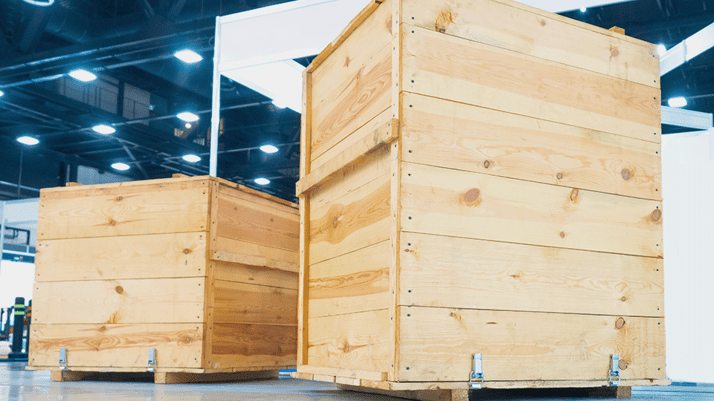 Once crated, drivers are typically unable to assess the securement method of the commodity. As a result, without communication, it is unknown whether the shipment meets the minimum DOT standards for securement or not. However, DOT securement standards for both length and weight must always be met.
Once crated, drivers are typically unable to assess the securement method of the commodity. As a result, without communication, it is unknown whether the shipment meets the minimum DOT standards for securement or not. However, DOT securement standards for both length and weight must always be met.
Additionally, without the right insights (i.e. whether it’s secured internally, how much padding each crate has, what crates are made out of), your cargo may be damaged in transit because improper measures were taken.
Namely, this information is crucial because when crated commodities are transported, there's a chance that a ‘hard stop’ may occur — for various reasons.
Should this happen, the commodity might lose its integrity and secure position in its crate, causing securement to fail and sending freight forward against the crate. In the worse case, loose cargo may break through the crate itself causing additional risk/damage.
Finally, for crated high-value freight it’s important to specify whether your carrier will be allowed to secure over that crate (with indirect securement) or directly to the crate base itself.
Ideally, securement from the trailer directly to the commodity (inside of the crate) is the preferred method.
This may be an option if portholes are available on the sides of the crate near the bottom — which would potentially allow securements to make direct contact with the commodity rather than the crate.
Essentially, transportation providers will want to verify that the party responsible for crating cargo considered securement and transportation safety as they did so. As such, expect to answer questions about each crate.
What is Your Declared Cargo Value?
Although your transportation provider trusts your expertise, it’s important to be on the same page as to the actual value of each shipment. This information helps them uncover how much risk they’re taking on by transporting your freight.
That said, sometimes, with too many hands in the mix — like when an original equipment manufacturer (OEM) uses a freight forwarder or third-party logistics (3PL) company to arrange transport — specific cargo details get lost in translation.
In these situations, the cargo value that has been declared might not accurately reflect its actual value.
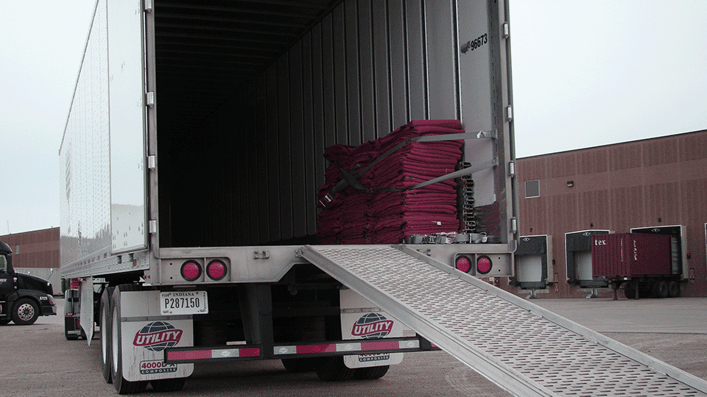
Note: in some cases, there may be confusion about the difference between actual cargo value and contractual limit of liability.
Here’s what this means. . .
For example, if a freight forwarder has a limit of liability outlined in their contract with the actual shipper — limiting the forwarder’s exposure to a $100,000 claim — the freight forwarder might then declare the cargo value is $100,000.
In actuality, though, the replacement value of that cargo could be $900,000.
In a scenario like this, it could get messy if, and/or when, a claim occurs; the freight forwarder's limit of liability might only protect them (and not necessarily the carrier transporting the commodity).
For this reason, it is critical that every load confirmation includes the actual cargo replacement value and is consistently shared between appropriate parties to limit the risk of potentially being underinsured.
So, you should expect your transportation provider to drill a bit deeper here, asking questions and doing their own research before making a commitment.
Who Owns This Freight?
In some situations, the owner of the cargo in question may not be directly involved in arranging its transport. This is often the case when freight forwarders, customs brokers and 3PLs are involved.
However, in instances where a transportation company needs to reach certain indemnification understandings regarding the high-value cargo — limiting or removing that company’s financial risks — these agreements must be made with the actual owner of the goods.
For this reason, it’s not uncommon for transportation providers to inquire as to who owns the high-value cargo and ask certain things of that party directly.
How Often Do You Ship This Kind of Freight?
Moving high-value freight is always a risky endeavor. However, experienced shippers (who move this freight regularly) develop tried-and-true systems for protecting, loading and handling these cargoes.
Without understanding how frequently you move these goods, though, your provider won’t know how much oversight to administer.
Helping a shipper that frequently moves cargo valued under $100,000 but needs a one-off solution for an $800,000 unit looks different — from a planning perspective — than servicing a company that regularly moves $800,000 freight.
To ensure success, these situations warrant greater oversight and a more selective choice of carrier (when working with a broker) and driver (when utilizing a trucking company) on your provider's behalf.
Beyond this, less experienced high-value shippers may need to provide deeper specificity and more comprehensive information to their transportation providers.
Do You Have a Securement Plan?
Many companies that have high-value cargo to move have a pre-existing securement plan for these goods. In order to ensure these shipments are properly handled by your transportation provider, you may be asked to supply a securement plan of your own.
These plans usually take the form of a diagram of the product being moved, complete with dimensions, potential securement points and areas where damage could occur during the transport securement.
As the party that is closest to your freight, drawing up a securement plan is a great way to educate your transportation company. In turn, good companies will distribute this information to all necessary parties (carriers, drivers, etc.) to contribute to the safety of your goods during loading/securement.
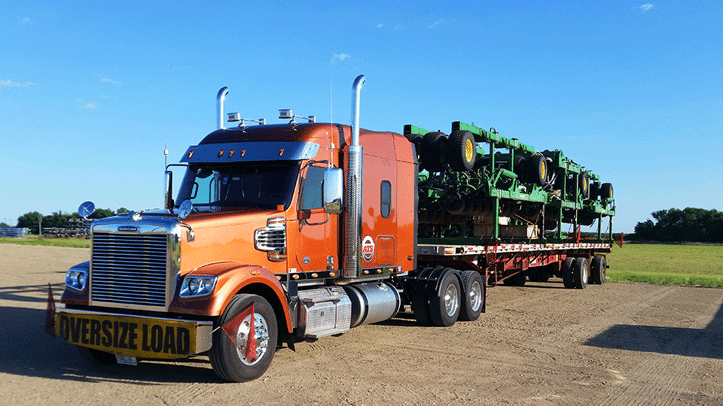
If you don’t have a securement plan to share, work with your provider to formulate one. Answering questions about where potential sensitive points exist on your cargo and supplying pictures for your provider to reference is a great starting point.
Important information to provide about cargo sensitivity:
- Are there any sensitive points that may be damaged during securement?
- Windshield
- Thin aluminum layers
- Fiberglass hoods
- Will edge/corner protectors be needed to prevent cargo or securement damage)?
- Are there approved securement points?
- D-rings, hooks, etc.
- Is this cargo going to be exposed to highway speeds? Will this be a problem?
- Are components on the cargo designed to withstand wind speed/gusts at or above 60 miles per hour?
Is This Cargo Sensitive to Water, Temperature or Dirt?
Some types of high-value freight risk damage if exposed to certain temperatures, moisture and dirt/debris. Unfortunately, these elements are intimately intertwined with transportation processes and sensitivity to them must be planned for.
As such, expect to be asked about whether exposure to external elements like water, temperature and dirt will cause damage to your freight.
If so, your transportation provider will need to take steps to mitigate these problems.
Steps may include shrink wrapping electronic components and sensitive areas, utilizing a dry van/reefer/Conestoga trailer if possible, and/or tarping where necessary.
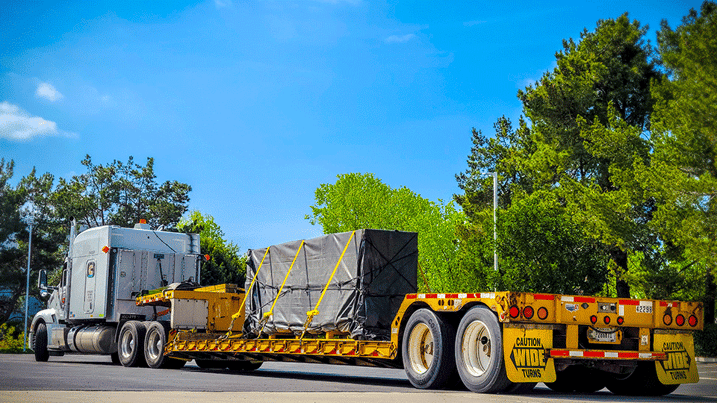
What Are The Dimensions (Dims) of Your Cargo?
For a transportation company to do its job, they need to thoroughly understand what they’re getting into. A shipment’s overall dimensions (height, width, length, weight) drive many of the arrangements made for it.
You see, to move cargo correctly, it’s important to match it with its best-fit solution.
And not knowing whether an item will actually fit inside of a Conestoga trailer, for example, can lead to significant delays. Maybe that shipment is actually too wide to fit on a Conestoga, which necessitates a flatbed with tarps and, in all likelihood, acquiring permits.
Secondly, with accurate dims, the carrier can apply for the correct permits if the load is oversize or overweight (OSOW) in general or over-dimensional or (OD).
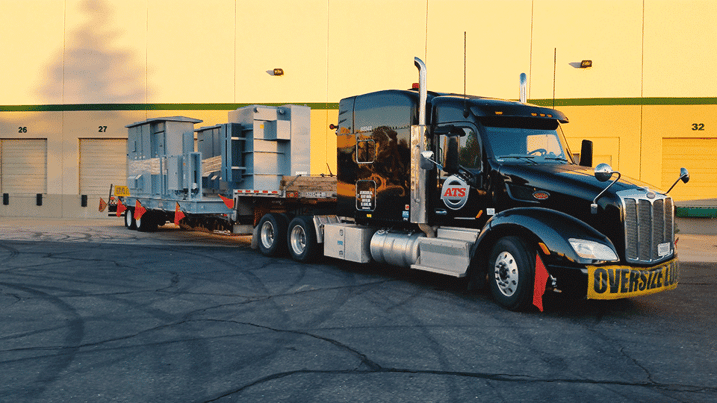 Inaccurate dimensions when permitting and route planning can lead to a catastrophic event such as making contact with an overhead bridge.
Inaccurate dimensions when permitting and route planning can lead to a catastrophic event such as making contact with an overhead bridge.
Planning for these intricacies must be done well ahead of your targeted shipping date, making thorough communication about your high-value load crucial.
Do You Have a Recommended Trailer Type?
Depending on your company’s loading/docking capabilities, you may have a recommended trailer type or two. Since you know your facilities best and are familiar with the trailers you typically use, it’s always good to pass this information along to your provider.
However, this is where working with an experienced transportation company will be impactful — especially if this is a piece of cargo outside of your normal scope.
Moving high-value freight is an expensive enterprise with elevated risk. But utilizing the wrong trailer type for your load can raise your rates unnecessarily.
A great provider will consider your trailer type recommendations, alongside your cargo dimensions and projected route to ensure the solution you receive is definitively the right one.
What Are Your Loading/Offloading Arrangements?
Your transportation provider might ask you about the loading/offloading arrangements for your cargo. This is done to gather a bit more information about what a truck driver should expect upon arrival. How you plan to load your cargo will also help your provider select the right transportation equipment for it.
If, for any reason, you don’t have loading/offloading arrangements made, your provider can help you get them set if need be.
So, Why Does Shipping High-Value Freight Cost More?
In the end, each of these queries is meant to help your provider assess the risks associated with hauling your freight and develop a plan of action should they elect to do so.
That said, even with a well-experienced provider, moving high-value freight can still be challenging and costly. Often, these loads are far more expensive to move than others for a number of reasons. It’s important that you understand why this is the case.
With the right procedures, it might even be possible for you to save some money on these shipments.
Check out this article which outlines why moving high-value cargo is so expensive and provides some cost-saving tactics.
Here at ATS, we pride ourselves on our ability to help shippers across industries deliver on their customer commitments. For this reason, we urge you to reach out with any questions you may have, whether related to high-value transport or otherwise. We’re always happy to help you in any way you need.




